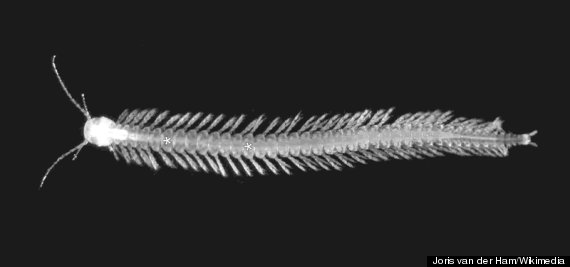This unique crustacean may be blind, but it has quite the bite.
As part of a new study published this month in peer-reviewed journal Molecular Biology and Evolution, a team of international researchers revealed conclusive evidence that the centipede-like Speleonectes tanumekes is the first venomous crustacean known to science.
While venom is commonly found among arthropods, the larger category of invertebrate animals that includes crustaceans along with poisonous insects and spiders, no other crustaceans are known to have such toxic properties.
"Venoms are especially common in three of the four major groups of arthropods, such as insects. Crustaceans, however, are a glaring exception to the rule," researcher Dr. Bjoern von Reumont of London's Natural History Museum told BBC News. "While they can be as varied as tiny waterfleas, krill, crabs and barnacles, not one of the approximately 70,000 described species of crustaceans was known, until now, to be venomous."

Scientists recently confirmed that the Speleonectes tanumekes is the first venomous crustacean discovered. (Joris van der Ham/Wikimedia)
Speleonectes tanumekes, which can grow up to an inch long, is part of a rare class of crustaceans called remipedia, which are primarily found in underground water systems located in the Caribbean, Canary Islands and western Australia.
Remipedes have been acknowledged since the 1980s, but research into the species of venomous crustaceans dates back to only 2007.
So, how did researchers ascertain these crustaceans are capable of delivering a dose of poison? After observing needle-like structures on the creature's front prongs, the team reconstructed a model of the tiny structure that might allow the remipede to inject venom into its prey. They found the venomous crustacean can paralyze other crustaceans with a neurotoxin, similar to the one found in spider venom, by delivering it through this needle-like apparatus.
"We think the neurotoxin is stopping their prey getting away and that the peptidases [enzymes] are allowing the remipedes to drink their prey like milkshakes," the Natural History Museum's Dr. Ronald Jenner, another co-author of the study, told the science journal Nature.
